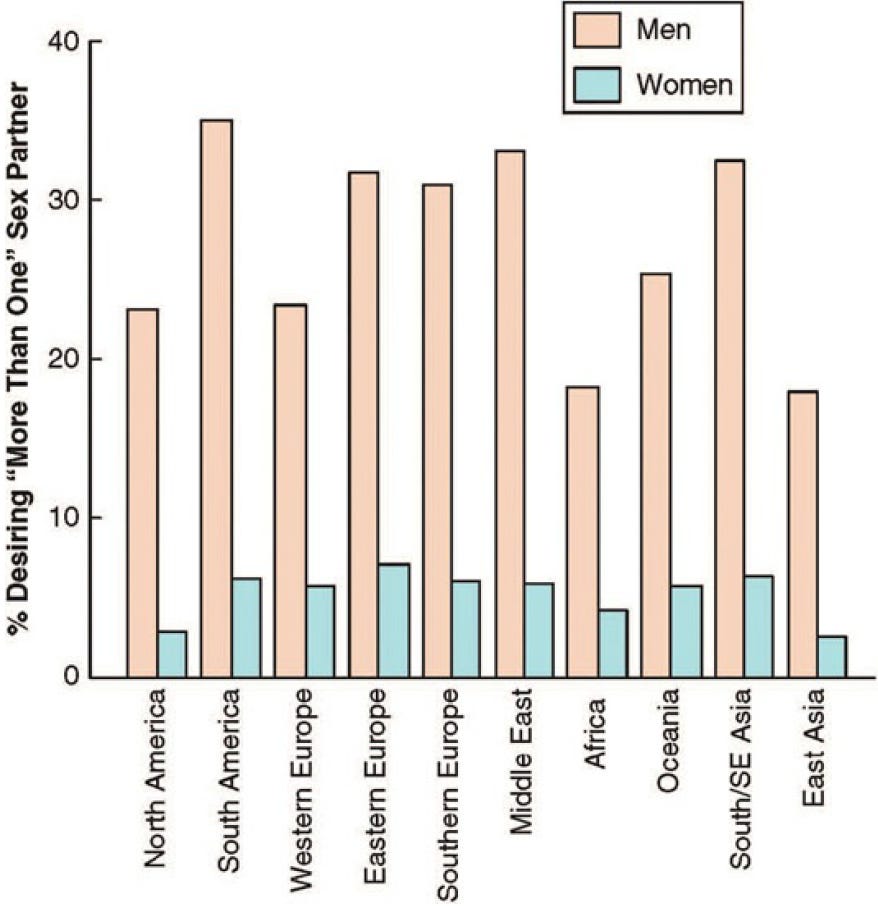12 Things Everyone Should Know About Evolutionary Psychology
Why humans are the way we are
This is the latest post in my “12 Things Everyone Should Know” series. You can access the full collection here.
In this post, I’d like to tell you about my favorite area in all of science: evolutionary psychology. Let’s kick things off with a question…
The short answer is that evolutionary psychology is an approach to psychology that takes theories from evolutionary biology, and uses them to shed light on the mind and behavior.
Evolutionary psychologists argue that, just as hands evolved for grasping and eyes for seeing, the basic constituents of the mind evolved for their own adaptive purposes: Hunger evolved to motivate us to eat, for instance, whereas parental love motivated us to care for our young. The ultimate function of these psychological adaptations is to help their owners to survive, have offspring, and help their genetic relatives to survive and have offspring. To put it another way, they evolved to help their owners pass on their genes.
In the following, I’ll outline 12 key findings from this approach to the mind. I won’t be able to go into detail about the evidence that these findings have evolutionary underpinnings, as opposed to being shaped purely by culture. For what it’s worth, though, I’ve tried to select findings where I think the evidence is particularly compelling. If the post whets your appetite for more, I’d recommend checking out David Buss’s book Evolutionary Psychology: The New Science of the Mind, or my own book The Ape That Understood the Universe (you can read the first chapter for free here).
1. Sex Differences in Interest in Sexual Variety
On average, men are more interested than women in casual sex and sexual variety. Consistent with an evolutionary explanation for this finding, the difference is found in every major world region, as shown in the graph below. Note that the claim is not that men are promiscuous, whereas women are monogamous! Both sexes have the capacity for both long-term and short-term relationships, and both are about equally interested in long-term ones. The sex difference is found largely for short-term or low-commitment relationships.
Evolutionary Rationale: Because of pregnancy and lactation, the maximum number of offspring that men can produce is higher than the maximum women can. A man who had, say, three sexual partners in a year could potentially end up with three offspring; a woman who had three sexual partners would have no more offspring than she would if she’d only had one. This isn’t the only contributing factor, of course, but it does mean that, throughout our evolutionary history, there was a stronger selection pressure on our male ancestors than our female ancestors for a taste for multiple mates.
2. Sex Differences in the Preference for Good Looks in a Mate
On average, men have a stronger preference than women for good looks in a long-term mate. To be clear, the idea is not that men only care about a mate’s looks, whereas women care about other stuff. As the next graph shows, both sexes consider a mate’s looks fairly important, and neither is typically obsessed with them. Moreover, as the graph also shows, the sex difference is hardly enormous. Still, there is a difference, and it’s been found in almost every culture where we’ve looked for it.
Evolutionary Rationale: Both sexes are attracted to physical traits indicative of youthfulness and fertility. However, as a result of menopause, women’s fertility is more tightly coupled to youthfulness than men’s. For that reason, men’s preference for traits indicative of youthfulness has evolved to be somewhat stronger.
Men and women aren’t thinking about these kinds of things, of course; they just have inbuilt, gut-level preferences. But why do they have those preferences? That’s what the evolutionary explanation aims to explain.





